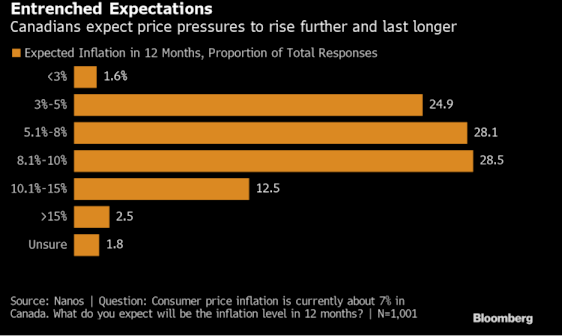This week in charts
U.S. savings back down
Netflix Disrupted Entertainment With Binge Viewing. Now Can It Avoid Disruption Itself?
This company that became an outlier when it ditched the conventions of television has become the outlier of the streaming world by sticking to the Netflix way. Bingeing alone doesn’t explain the company’s success over the past decade, but it was the singular phenomenon that distinguished Netflix and revolutionized Hollywood, as streaming television replaced the movie business and music industry as the defining cultural force of our time.
So what happens when the disrupters get disrupted? How do successful companies respond when the conditions of their early success change—and can they? To binge, or not to binge?
These are the fundamental questions facing Netflix as one of the biggest winners in the pandemic economy has become the year’s biggest loser in the ailing S&P 500. The answers might just force this proudly iconoclastic company to swallow its pride.
U.S. corn-based ethanol worse for the climate than gasoline, study finds
“Corn ethanol is not a climate-friendly fuel,” said Dr. Tyler Lark, assistant scientist at University of Wisconsin-Madison Center for Sustainability and the Global Environment and lead author of the study.
The research, which was funded in part by the National Wildlife Federation and U.S. Department of Energy, found that ethanol is likely at least 24% more carbon-intensive than gasoline due to emissions resulting from land use changes to grow corn, along with processing and combustion.
Geoff Cooper, president and CEO of the Renewable Fuels Association, the ethanol trade lobby, called the study "completely fictional and erroneous," arguing the authors used "worst-case assumptions [and] cherry-picked data."
Under the U.S. Renewable Fuel Standard (RFS), a law enacted in 2005, the nation's oil refiners are required to mix some 15 billion gallons of corn-based ethanol into the nation's gasoline annually. The policy was intended to reduce emissions, support farmers, and cut U.S. dependence on energy imports.
Soaring Global Coal Use Is Obliterating Emission Reductions Achieved in the U.S. Since 2005
“The surging use of coal around the world shows, once again, that the Iron Law of Electricity remains in force. That law says that people, businesses, and governments will do whatever they have to do to get the electricity they need. The Iron Law matters because the electricity sector is the largest emitter of carbon dioxide emissions. And politicians from China to the Czech Republic are going to do everything they can, including “burning anything” they can find, to avoid blackouts.
The punchline here is clear: Although the U.S. has been leading the world in cutting its greenhouse gas emissions – in fact, no other country even comes close in terms of absolute reductions -- other countries are not following suit. Furthermore, I’m not arguing that we should quit trying to reduce our emissions. What I am saying is that we must be realistic about the scale and cost of our emissions-reduction efforts and the extent to which those efforts are making a difference in the global scheme.
I’ll end by repeating the same point I have been making for more than 12 years: renewable energy cannot, will not, be able to meet soaring global energy demand. If the countries of the world are serious about reducing coal use and the emissions that come from burning that carbon-heavy fuel, they need to get serious about N2N: natural gas to nuclear. Both sources are low-carbon, relatively low-cost, scalable, and deployable.”
More on energy
This week’s fun finds
Summer 2022 reading and listening lists – “Trying to forget about inflation” edition
If you’re looking for something to read by the water (whether at a cottage or the public pool because of gas prices), the Investment team book club has some suggestions for you. The two books contain commentary letters that are perfect bite-sized reads in between refills of iced tea or your favourite cold beverage. Although they’re a trip back in time that covers the first 15 years of the millennium, the lessons are timeless.
Don’t turn D-I-Y into D-I-Why?!?
So 12345 isn’t a good password?





























